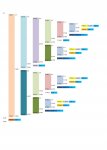InstructionWhich7142
Registered User.
- Local time
- Today, 14:43
- Joined
- Feb 24, 2010
- Messages
- 203
I have a logic tree, but I can't express it in code?
The problem is some branches of the tree rejoin further down!
Maybe these two images from google explain it better:
What i'm trying to do looks like this, see how the true's feed back into each other on the left
http://www.emeraldinsight.com/content_images/fig/2860130202003.png
More "normal" logic tree's i know how to program look like this:
http://www.christianapologetic.org/images/accura10.gif
everything branches out, nothing branches back
Please could someone let me know what i'm missing
The problem is some branches of the tree rejoin further down!
Maybe these two images from google explain it better:
What i'm trying to do looks like this, see how the true's feed back into each other on the left
http://www.emeraldinsight.com/content_images/fig/2860130202003.png
More "normal" logic tree's i know how to program look like this:
http://www.christianapologetic.org/images/accura10.gif
everything branches out, nothing branches back
Please could someone let me know what i'm missing




